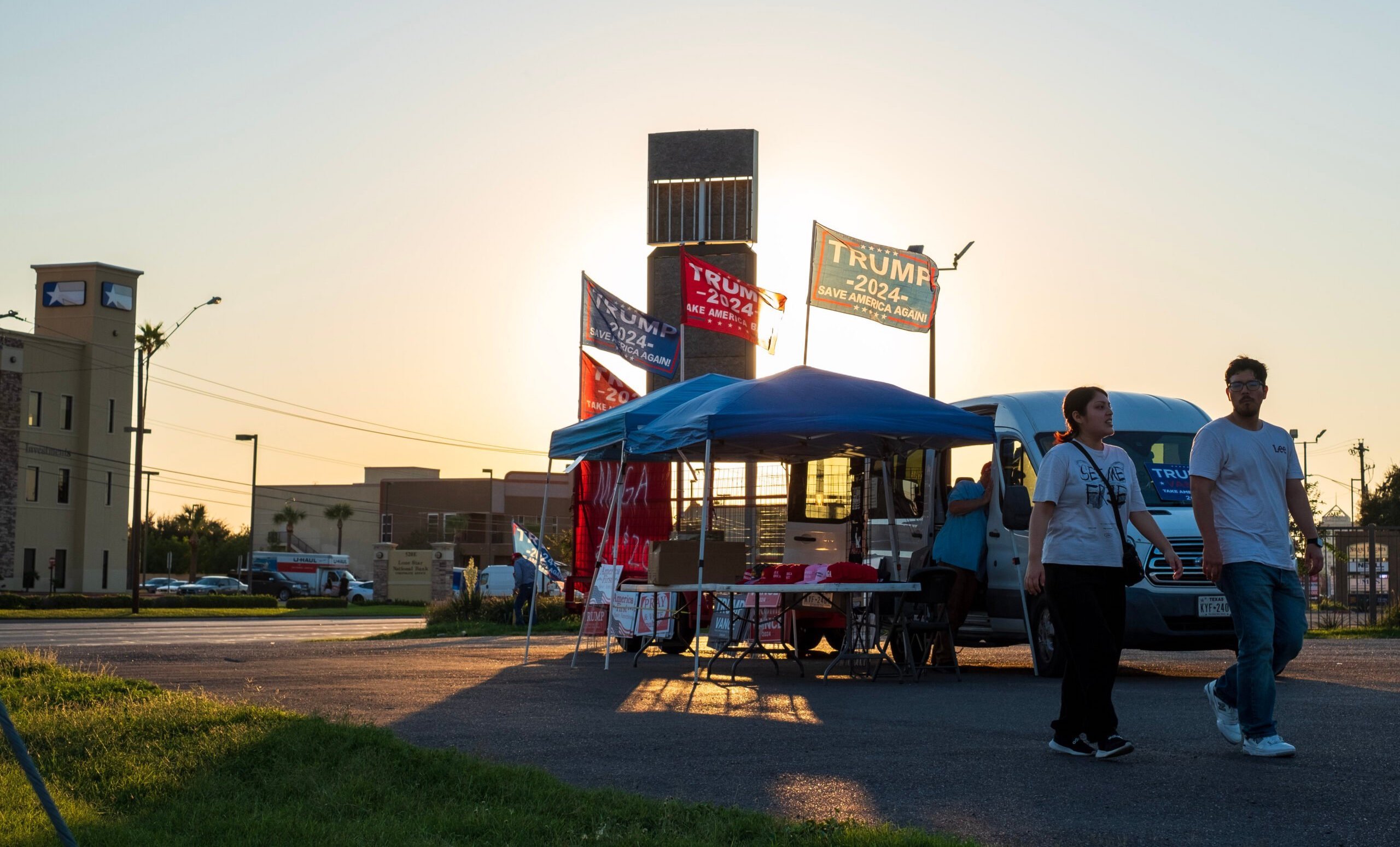Four long years ago, much ado was made about the inroads made by then-President Donald Trump in Texas’ Rio Grande Valley, the four-county region of 1.3 million mostly Hispanic residents at the state’s southern tip. Then-candidate Joe Biden carried the traditionally deep-blue area by about 15 points total, winning both the state’s urban counties, Hidalgo and Cameron, and the rural, Starr and Willacy. But that was less than the half the margin by which Hillary Clinton had carried the Valley in 2016. (Much national attention was paid to sparsely populated Zapata County, neighboring the Valley, which Trump flipped.)
In the subsequent midterm, Republicans were bullish about a red wave that would build on Trump’s gains by appealing to conservative social attitudes and material economic interests of Valley Latinos. This didn’t really happen: The GOP flipped a congressional seat and a state House seat, which had both just been redrawn through redistricting to hang within GOP reach, but fell short in other races. And Democratic gubernatorial candidate Beto O’Rourke held the line, winning the four counties by margins mostly close to Biden’s.
On Tuesday night, however, the red wave—or at least a Trump wave—finally breached the Democratic dam in deep South Texas. Across the board, the top-ballot results were a bloodbath for Democrats, who once counted on the region, and Texas Latinos more broadly, to not just be blue but to turn bluer in reaction to the racist nativism of Trump and co.
In a historically drastic political shift, Trump won all the Valley counties, each of which had gone for O’Rourke by low-to-mid double digits two years prior (in a generally bad year for Texas Dems) and for Clinton by between 33 and 60 points in 2016.
In Hidalgo County, the most populous Valley county, Trump beat Kamala Harris by three points. In the prior four cycles, the top-vote-getting Dem had won Hidalgo by as many as 40 (Clinton) and as few as 17 (Biden). In neighboring Cameron County, Trump won by 6 points. O’Rourke had won Cameron by 10 in 2022, Biden by 13 in 2020, O’Rourke (running for Senate) by 26 in 2018, and Clinton by 33 in 2016. In the rural areas, Trump won Starr by 16—breaking a Democratic win streak tracing back to the late 19th century—and Willacy by 3 in equally shocking reversals from prior elections.
GOP Congresswoman Monica De La Cruz, whose gerrymandered district is rooted in Hidalgo County, won reelection over a repeat challenger by a much more comfortable margin than two years prior; Democratic Congressman Vicente Gonzalez, in a bluer neighboring Cameron County-based district, barely held his seat after winning comfortably last cycle—as did Dem Congressman Henry Cuellar, whose district reaches into Starr. In the state Legislature, Republicans unseated an incumbent Democratic state Senator Morgan Lamantia—the only competitive seat in the upper chamber—and easily protected the Cameron County state House seat they picked up in ’22.
The Trump-centric red wave didn’t entirely drench the lower portion of Valley voters’ ballots. For example, Cameron County may have favored Trump, but it also favored the failed Democratic U.S. Senate candidate, Colin Allred, by four points, while electing a non-incumbent Democratic sheriff—with minimal voter dropoff—by 16 points over a Republican. Allred won all the Valley counties but Starr, and Hidalgo and Starr both elected Democratic sheriffs over Republicans.
In the best case for Democrats, this limited down-ballot resilience signals a unique appeal of Trump in the region (and, to an extent, among Latinos more broadly), something liberals once found unthinkable but have increasingly been forced to accept. When Trump one day fades from the political scene, perhaps his successors will be unable to replicate his progress, while Democrats cling to or reestablish at least a narrow edge up and down Valley ballots. Who knows—maybe Texas Dems (led by Brownsvillian Gilberto Hinojosa, incidentally) could even take this electoral crisis as a long-overdue hint to invest more in the Valley, refine their pitch, and gain back ground.
But there’s little evidence on which to hang this pollyannaish vision. It is Republicans who have spent cycle after cycle now building on gains in the Valley, undeterred it seems by what looked like setbacks, propelled by a belief that they had untapped appeal in the region based on border security, religion, or just plain effort in a low-turnout place often taken politically for granted.
Turnout rates in Hidalgo, Cameron, and Starr counties were lower, by a handful of points, than in 2020—so it wasn’t a freakish Trump turnout that fuelled Tuesday’s results. And Trump surged upriver along the South Texas border, too: In Webb County, home to Laredo, Trump prevailed by 2, a 25-point swing from 2020.
Future elections in the Valley may reveal a meaningful distinction between a Trump wave and a red wave. And, further, South Texas cannot accurately stand in for Latino Texans as a whole, who live everywhere in the Lone Star State, most numerously in the bigger urban centers.
Regardless, something historic happened down south Tuesday night, something that wasn’t in the game plan for turning Texas blue, something for which Democrats currently have no simple answers.


